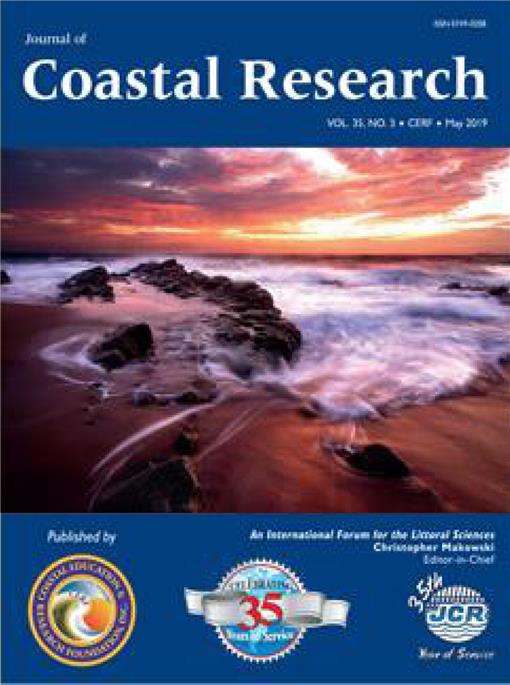Xu, M.; Meng, K.; Zhao, Y., and Zhao, L., 2019. Sedimentary environment evolution in East China's coastal tidal flats: The North Jiangsu radial sand ridges. Journal of Coastal Research, 35(3), 524–533. Coconut Creek (Florida), ISSN 0749-0208.
The North Jiangsu radial sand ridges (NJRSR) are a unique sedimentary system comprising the largest silt and mud coastal tidal flat in China. Many factors influence its tidal geomorphology sensitivity when responding to the marine environment and human activities. In this study, three typical core samples were collected from sampling points near Xinyang Gang (XYG), Chuandong Gang (CDG), and Xiaoyangkou Gang (XYK). 210Pb and 137Cs radionuclide dating was used to estimate the sedimentation rate of the tidal flat. On the basis of combined sediment grain size and reclamation history over the last 50 years, the evolution of the NJRSR coastal tidal flat sedimentary environment under the impact of human activities and the changing coastal environment was examine. The result indicated that the predominant type of sedimentary deposition is sandy silt; however, sediment composition varies because of coastal reclamation activities extending into the sea and with changes in sediment source and depositional forces. Average sedimentation rates of the three core samples were 1.27, 1.85, and 2.43–3.3 cm/y, respectively, reflecting increasing sedimentation rates from north to south. However, sedimentation rates over the past century have gradually declined in core XYG because of a reduced supply of materials from northern sources. Moreover, sand content has increased in the north since the 1980s, and grain size has become coarser. In the middle sample, a sudden change in sediment composition occurred in the 1950s–60s, exhibited by a significant reduction in sand content but an increase in silt content and finer grain sizes. In the south, grain size coarsened initially before becoming finer, likely because of a reduction of eroded material from the Yellow River in the north, increased coastal reclamation activities, and changes in sedimentary dynamics.





